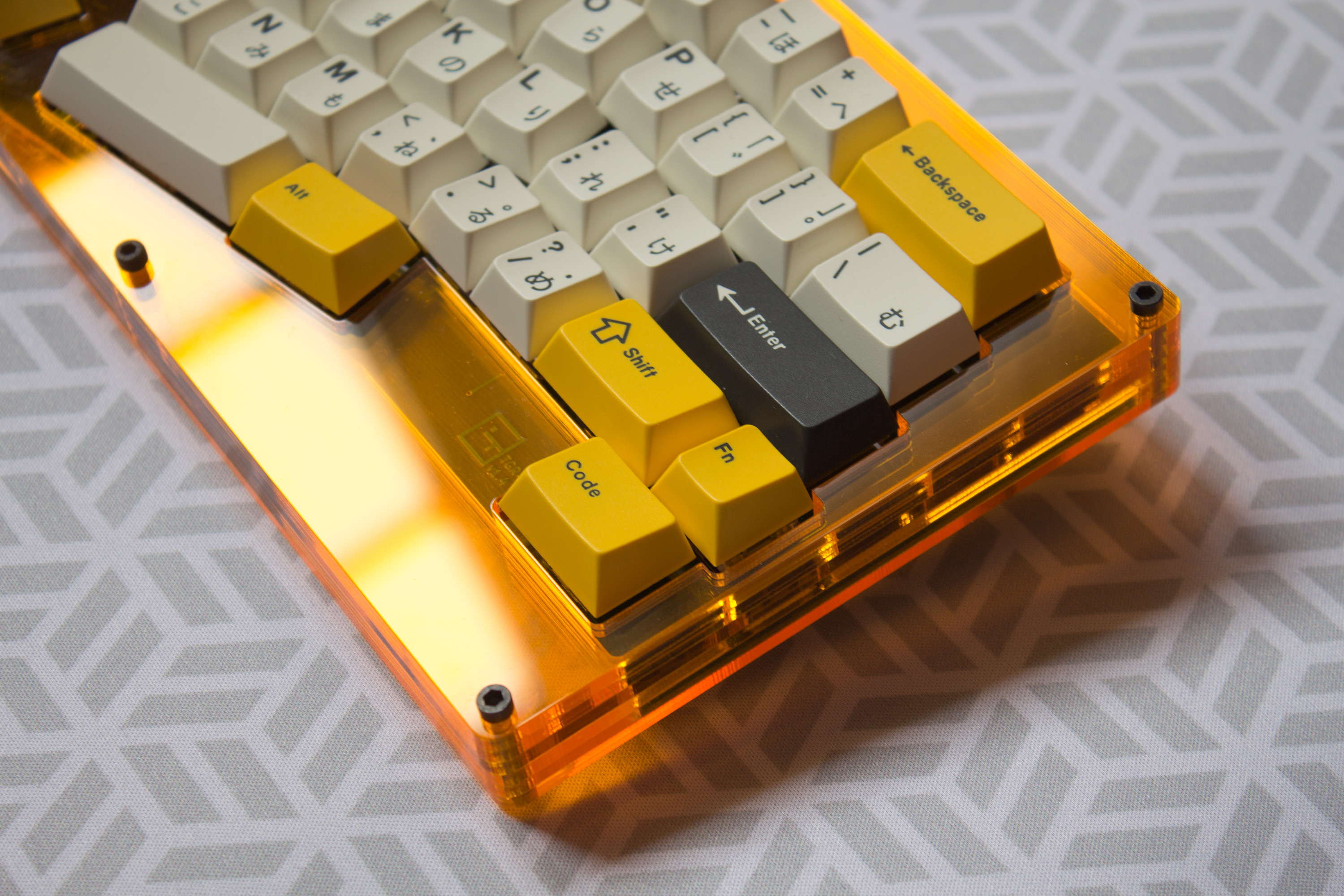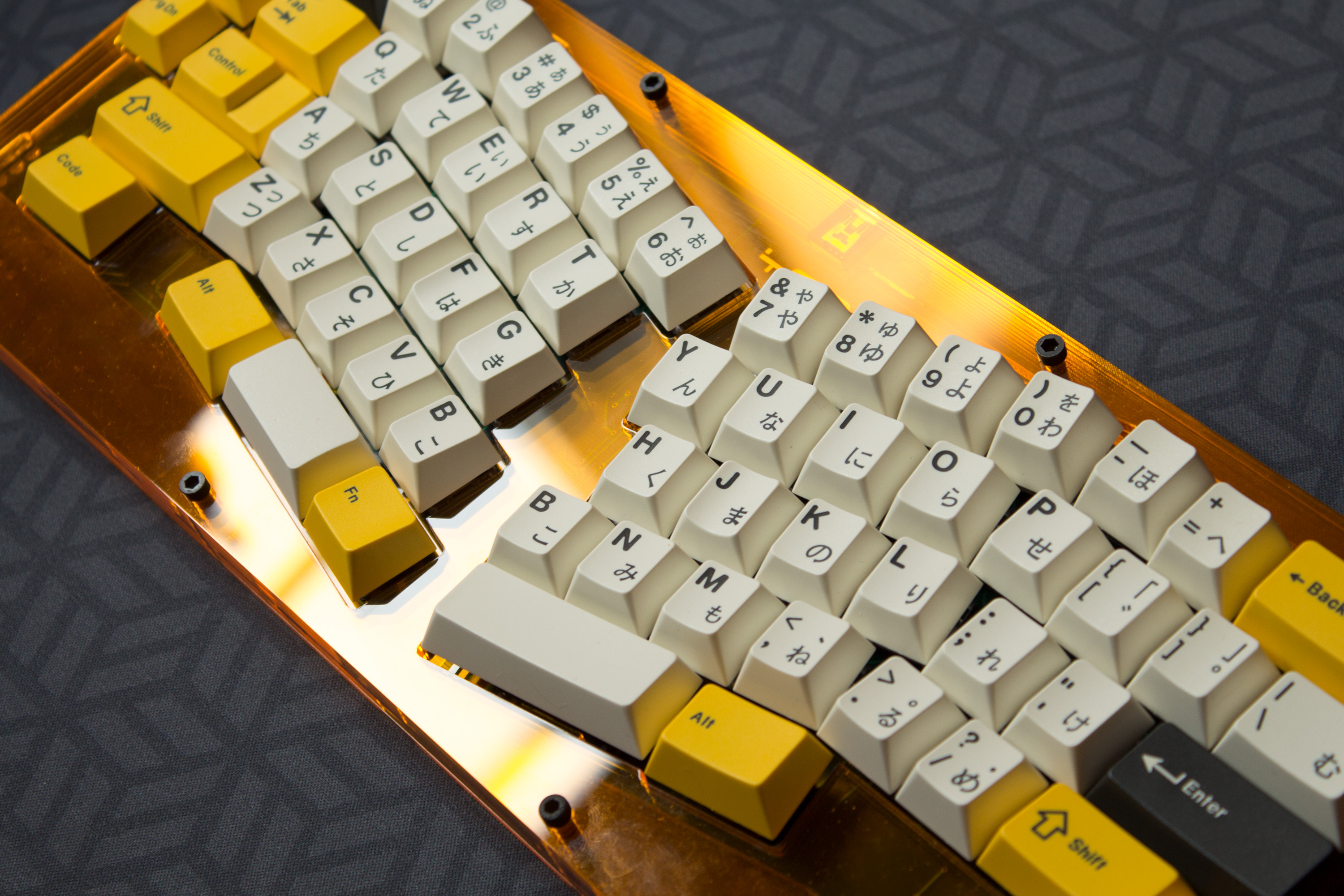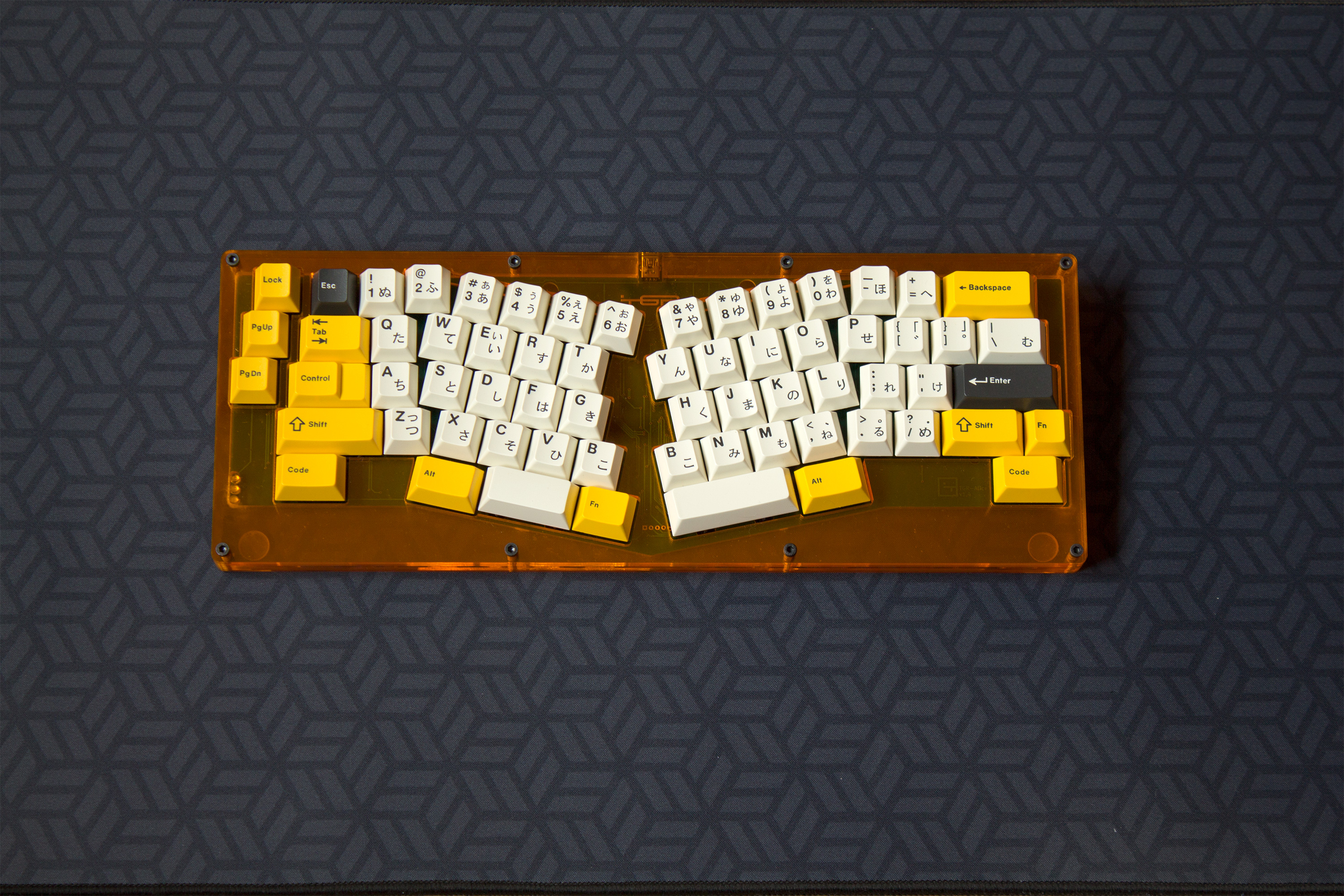A TGR Alice Acrylic Case Revision By Zambumon with addition of Ergosaurus support by cfbender (waxpoetik)
This repo is a fork of the original Lubrigante repo, intended to add support for the Ergosaurus PCB made by /u/reggatronics. It uses an extra spacing layer and a modified plate for the layout. Please read the available layouts section for details.
The aim of this project is to revisit the TGR Alice acrylic case (designed by Yuktsi), and host a guide with some basic resources so you can make your own.
You can find Yuktsi's original case files here.
- 4mm corners and a smaller footprint
- Top piece opening has now round corners instead of sharp ones
- Compatible with screw-in stabs.
- Fixed layout both for half-plate and full-plate.
THIS IS A WORK IN PROGRESS PROJECT. USE THE FILES AT YOUR OWN RISK
-
MAN OF LAYOUTS: fixed layout. Stepped caps lock, 2.00U space bar next to a 1.25U modifier, standard backspace.
- Half plate
Full platereworking
-
ERGOSAURUS- Angled: flexible layout. ANSI Caps lock or Stepped caps lock, 2.00U space bar next to a 1.25U modifier OR 2.25u space bar next to a 1u modifier, split or standard backspace.
- Half plate
-
ERGOSAURUS- Flat front: flexible layout. ANSI Caps lock or Stepped caps lock, 2.00U space bar next to a 1.25U modifier, split or standard backspace.
- Half plate
Wherever you use the files, make sure to set the scale to millimetres. The keyboard should be 348.8mm wide.
The case is made with multiple layers of acrylic that are stacked on top of each other and held together with 8 M3 screws. Each file has 5 distinct pieces:
- Piece A - Top opening: this is the top piece of the of the case, the one with two openings. This piece is placed on top of the plate.
- Piece B - Plate: used to hold the switches, it is the one with switch and stab holes. On the left side lower corner it has a slot for the LEDs.
- Piece C - Upper USB: this piece is placed right under the plate and it is necessary for 3mm or lower plates. With a 5mm plates, you won't need it.
- Piece D - Lower USB*: meant to be placed right on top of the bottom piece, the only difference with Piece C is the lack of an exit for the USB port.
- Piece E - Bottom piece: the one that closes the case. It has 3 M4 holes so you can install either 3 cone feet.
- 3mm pieces: probably the most versatile solution, as there are lots of acrylic finishes and it is the one I used while prototyping. It consists on 6 layers of 3mm acrylic: 2x Piece A, 1x Piece B, 1x Piece C, 1x Piece D, and 1x Piece E.
- 5mm pieces: this might look in the beginning as a more cost effective solution, but that might not be the case. The shop will probably use a bigger kerf to make the pieces, and that would be problematic for both most of them, specially the plate. If you decide to go with this route, there are two possibilities:
- 1x Piece A, 1x Piece B, 1x Piece D, 1x Piece E.
- 1x Piece A, 1x Piece C, 1x Piece D, 1x Piece E + a non-acrylic 1.5mm Piece B (either aluminum, brass, copper, carbon fiber, etc.).
- The TGR way: The original case used 3 different acrylic thicknesses: an 8mm Piece A, 5mm Piece B, 5mm Piece D, and 3mm Piece E. It had 8 countersunk M3 holes: 8 on Piece A, and two M4 countersunk on the Piece E. Additionally, its Piece E had 8 of its screw holes tapped.
- Mix of 3mm and 5mm layers: one possibility could be 1x 3mm Piece A, 1x 5mm Piece A, 1x 3mm Piece B, 1x 5mm Piece C, 1x 3mm Piece D, 1x 3mm Piece E.
There are a handful of ways of getting the acrylic pieces done:
- Contacting a local maker spaces or a laser cutting shop.
- Ordering online:
- PCB: you can use the original TGR Alice PCB or the one Maarten Dekkers has designed and that will be available for purchase soon.
- CNCd aluminum cone feet. These will most likely come with M4 screws.
- Bumpons: I recommend using some
SJ5302 3M, as these are very similar to the ones used by the CNCd cone feet. - Screws:
- 8x M3 20mm screws. The original acrylic TGR Alice used flat head nylon screws. I've used some hex socket screws. If you plan to use some nuts to hold the screws, you might need to use longer screws.
This repository is under the GNU GPL V3 license. If you plan to sell these cases, make sure to read it.


